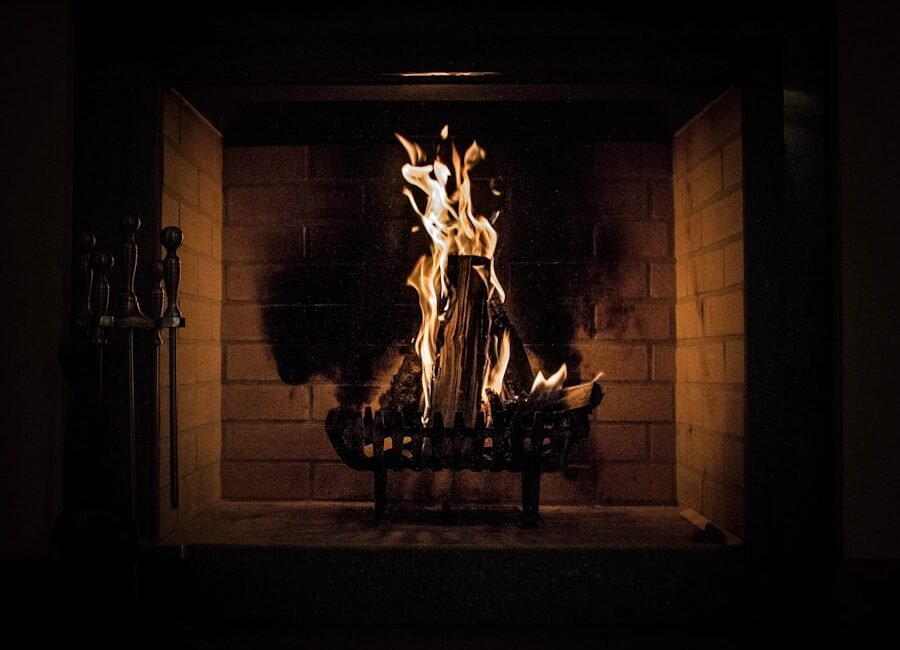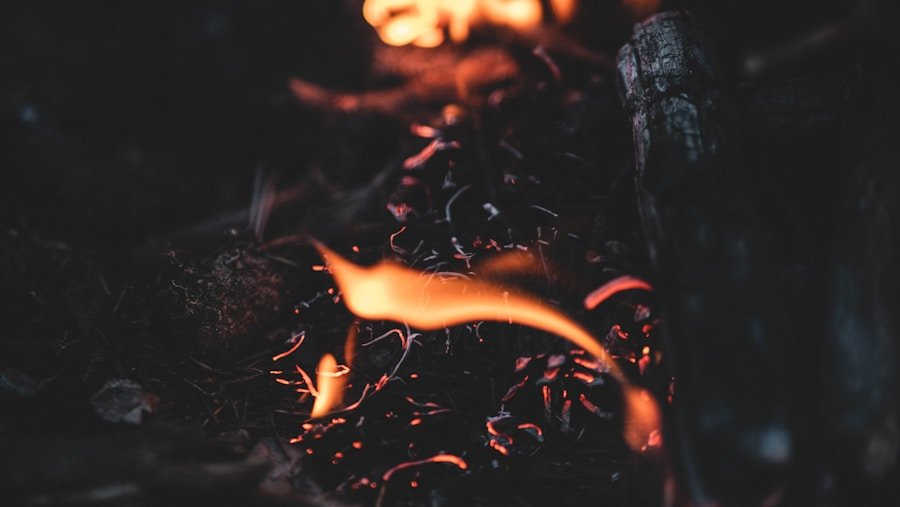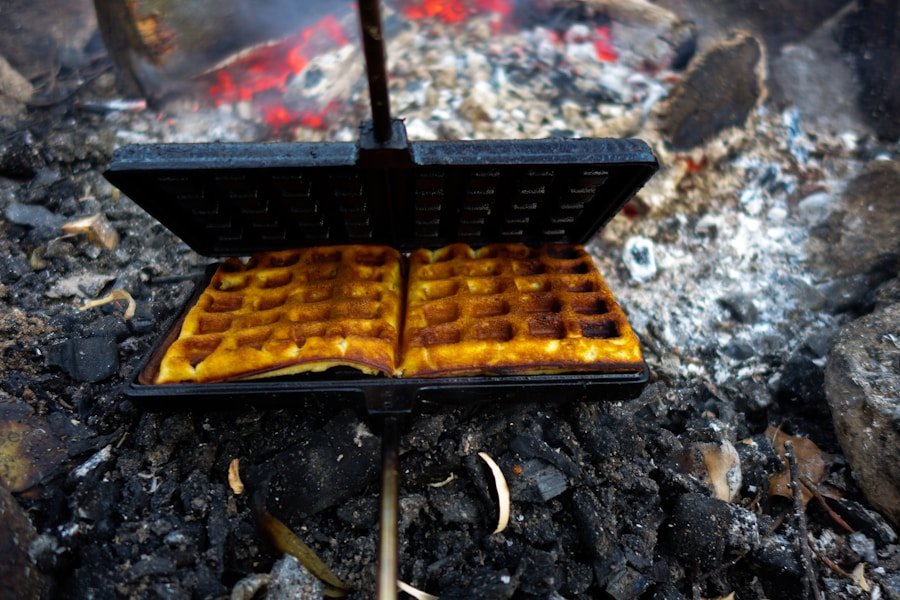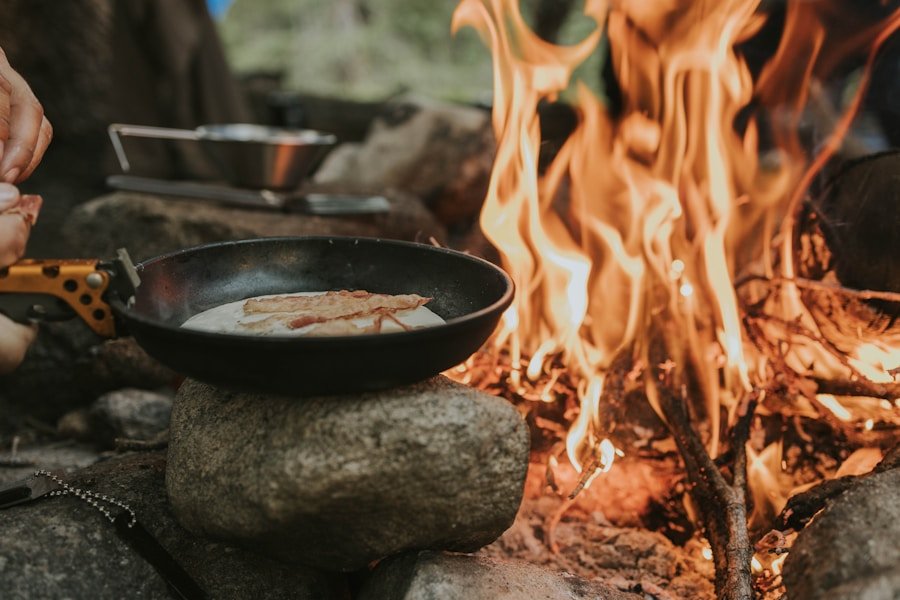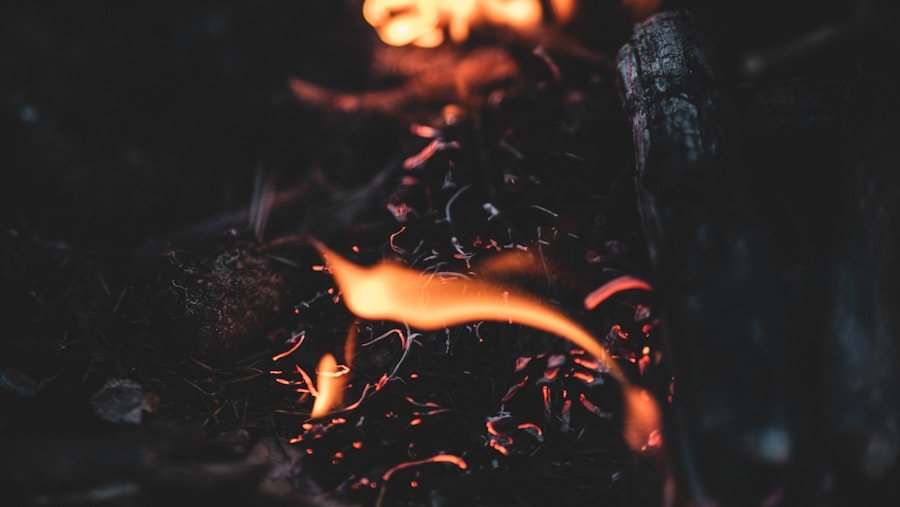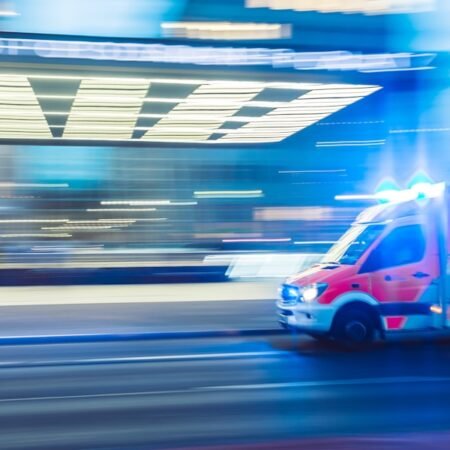When grilling, heat distribution plays a vital role in determining the success of a meal. Portable campfire grills, with their compact and often irregular cooking surfaces, require particular attention to heat distribution. It is essential to understand how heat is distributed in these grills to consistently achieve perfectly grilled meals.
Inadequate heat distribution can lead to inconsistent cooking results, where some parts of the food are overcooked while others remain undercooked. This not only results in a subpar dining experience but also poses health risks if certain parts of the food are not cooked to a safe internal temperature. Furthermore, uneven heat distribution can make it challenging to control the cooking process, leading to frustration and potentially ruining the meal.
Therefore, understanding and mastering heat distribution in portable campfire grills is crucial for outdoor cooking enthusiasts.
Key Takeaways
- Understanding heat distribution is the key to perfectly grilled meals on portable campfire grills.
- Even heat distribution is important for consistent grilling performance and avoiding hot spots.
- Tips for achieving even heat distribution include preheating the grill, using the right fuel, and adjusting the grill’s position.
- Choosing the right campfire grill with optimal heat distribution is crucial for successful grilling.
- Avoid common mistakes like overcrowding the grill, using too much fuel, and not properly maintaining the grill for better heat distribution.
How Heat Distribution Affects Grilling Performance
The way heat is distributed in a portable campfire grill can have a significant impact on the overall grilling performance. Without proper heat distribution, you may find it challenging to achieve the desired level of doneness in your food. For example, if one side of the grill is significantly hotter than the other, you may end up with charred and dry food on one side and undercooked food on the other.
Furthermore, uneven heat distribution can make it difficult to cook different types of food simultaneously. For instance, if you are grilling vegetables alongside meat, you may struggle to ensure that both are cooked to perfection when the heat is not evenly distributed. This can lead to a frustrating and time-consuming cooking experience, as you may need to constantly monitor and adjust the placement of your food to compensate for the uneven heat.
Tips for Achieving Even Heat Distribution in Campfire Grills
There are several tips and techniques that can help you achieve even heat distribution in your portable campfire grill. One of the most effective methods is to preheat your grill thoroughly before adding any food. This allows the entire cooking surface to reach an even temperature, reducing the likelihood of hot spots and ensuring that your food cooks evenly.
Another tip is to use a two-zone fire setup, where you create a hotter zone on one side of the grill and a cooler zone on the other. This allows you to move your food around as needed to ensure even cooking. Additionally, using a grill with adjustable height settings can help you control the distance between the food and the heat source, allowing for more precise temperature control.
Choosing the Right Campfire Grill for Optimal Heat Distribution
| Heat Source | Temperature Range | Heat Distribution |
|---|---|---|
| Charcoal | 500°F – 700°F | Even heat distribution with proper arrangement |
| Propane | 350°F – 550°F | Even heat distribution with adjustable burners |
| Wood | 400°F – 600°F | Uneven heat distribution, requires skillful management |
When selecting a portable campfire grill, it’s essential to consider its design and construction to ensure optimal heat distribution. Look for grills with sturdy and even cooking surfaces that are less likely to develop hot spots. Additionally, grills with adjustable height settings or multiple cooking surfaces can offer more flexibility in controlling heat distribution.
It’s also important to consider the material of the grill, as different materials conduct and retain heat differently. Stainless steel and cast iron grills are known for their excellent heat retention and distribution, making them ideal choices for portable campfire grills. Ultimately, choosing a grill with a design that prioritizes even heat distribution will set you up for success in your outdoor cooking adventures.
Techniques for Adjusting Heat Distribution in Portable Grills
In addition to selecting the right grill, there are several techniques you can use to adjust heat distribution while cooking on a portable campfire grill. One method is to rearrange the coals or wood chips to create a more even distribution of heat across the cooking surface. By moving the fuel source around, you can manipulate the intensity of the heat in different areas of the grill.
Another technique is to use heat diffusers or deflectors, which are placed between the heat source and the food to help distribute the heat more evenly. These accessories can be particularly useful for grills with uneven heating patterns, as they help mitigate hot spots and create a more consistent cooking environment.
Common Mistakes to Avoid When Grilling on a Campfire Grill
There are several common mistakes that can compromise heat distribution when grilling on a campfire grill. One of the most prevalent errors is overcrowding the cooking surface, which can lead to uneven cooking due to restricted airflow and heat circulation. To avoid this, be mindful of how much food you place on the grill at once and leave enough space between each item for proper air circulation.
Another mistake is neglecting to monitor and adjust the heat as needed throughout the cooking process. It’s essential to stay attentive and make adjustments as necessary to ensure that your food cooks evenly. This may involve moving food around, adding or removing coals or wood chips, or adjusting the height of the grill grate.
Enhancing Your Grilling Experience with Proper Heat Distribution
Mastering heat distribution in your portable campfire grill can significantly enhance your outdoor grilling experience. With even heat distribution, you can confidently cook a wide variety of foods without worrying about inconsistent results. This allows you to focus on enjoying the process of outdoor cooking and creating delicious meals for yourself and your companions.
Proper heat distribution also opens up opportunities for experimenting with different grilling techniques and recipes. Whether you’re searing steaks, slow-cooking ribs, or grilling delicate vegetables, having control over heat distribution enables you to achieve exceptional results with every dish. Ultimately, understanding and managing heat distribution in your portable campfire grill empowers you to elevate your outdoor cooking skills and create memorable dining experiences in the great outdoors.
In conclusion, mastering heat distribution is essential for achieving perfectly grilled meals on a portable campfire grill. Understanding how heat is distributed in these grills, how it affects grilling performance, and how to achieve even heat distribution are all crucial aspects of outdoor cooking. By choosing the right grill, employing effective techniques for adjusting heat distribution, and avoiding common mistakes, you can enhance your grilling experience and create delicious meals with confidence.
With proper heat distribution, you can elevate your outdoor cooking skills and enjoy memorable dining experiences in nature.
FAQs
What is a portable campfire grill?
A portable campfire grill is a cooking device designed for outdoor use, typically made of lightweight materials such as stainless steel or aluminum. It is designed to be easily transported and set up for cooking over an open flame, such as a campfire.
How does heat distribution work in portable campfire grills?
Heat distribution in portable campfire grills is influenced by factors such as the design of the grill, the type of fuel being used, and the positioning of the food on the grill. Understanding these factors can help users achieve even cooking and prevent hot spots.
What are the key factors that affect heat distribution in portable campfire grills?
The key factors that affect heat distribution in portable campfire grills include the distance of the food from the flame, the type of fuel being used (such as wood, charcoal, or propane), the design of the grill grate, and the airflow within the grill.
How can understanding heat distribution improve the grilling experience?
Understanding heat distribution in portable campfire grills can help users achieve better control over the cooking process, resulting in evenly cooked and flavorful meals. It can also help prevent food from burning or undercooking in certain areas of the grill.
What are some tips for achieving optimal heat distribution in portable campfire grills?
Tips for achieving optimal heat distribution in portable campfire grills include preheating the grill, arranging the coals or wood to create different heat zones, using a grill thermometer to monitor temperature, and rotating or repositioning the food as needed during cooking.


